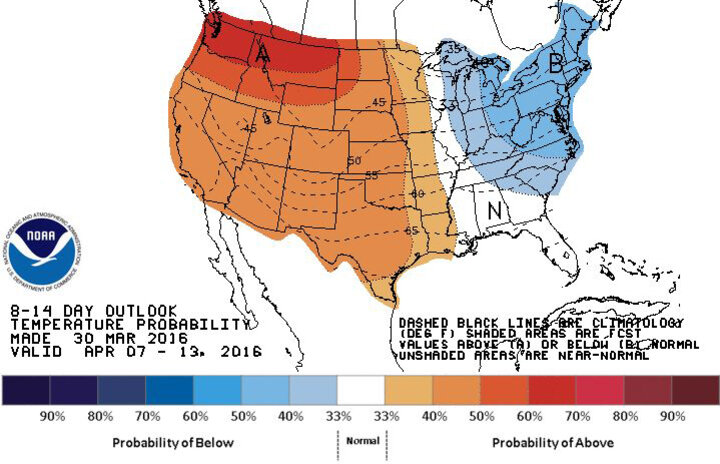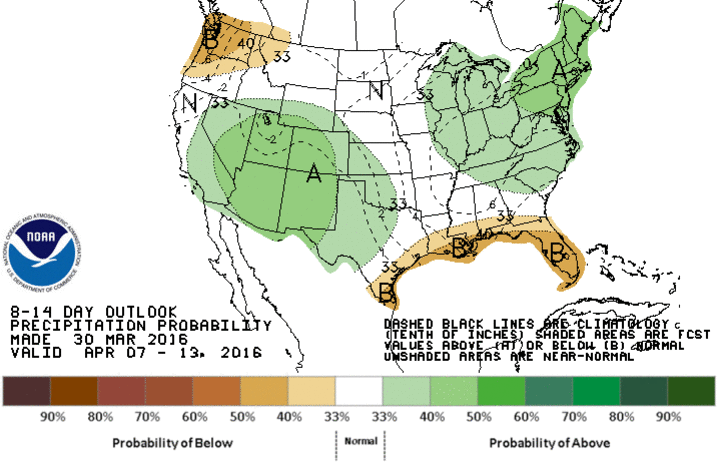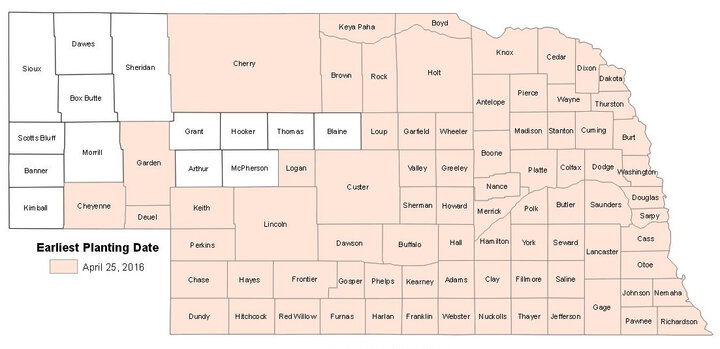


Warmer temperatures during March triggered germination of the early-emerging summer annual weeds: kochia, giant ragweed, common ragweed, and common lambsquarters (Figure 1, below). Kochia and common lambsquarters seedlings are emerging in fields in western Nebraska, and the first giant ragweed, common lambsquarters, and common ragweed seedlings have been detected in eastern Nebraska.
According to the National Weather Service Climate Prediction Center, temperatures during the next two weeks are likely to stay above normal across Nebraska and much of the Great Plains (Figure 2). In terms of precipitation, Nebraska is expected to receive normal rainfall during the first two weeks of April (Figure 3). With predicted above normal temperatures, enough soil moisture, and the RMA initial planting date for soybeans more than three weeks away (April 25, 2016; Figure 4), management of marestail and the aforementioned early-emerging summer annual weeds should be considered now. If not controlled, these weeds will continue to take advantage of the favorable weather conditions and management at planting or after crop emergence can become challenging.
For fields infested with marestail, kochia, giant ragweed and/or common ragweed, an application of burndown herbicides along with soil residual products is recommended at this point to manage established weeds and to control seedlings that are yet to emerge. With warmer temperatures and enough soil moisture predicted for this spring, soil applied herbicides are expected to have a shorter residual. Another burndown along with soil residual products at or after planting soybeans may be necessary for a clean start.
For sites infested with common waterhemp and/or Palmer amaranth, another herbicide application later in the season prior to canopy closure may be necessary to manage late emerging weeds (Figure 1). Keep in mind that common waterhemp and Palmer amaranth are late-emerging species and have a wide emergence window, typically germinating from May until late-July/early-August. Given the incidence of glyphosate-resistant weeds across the state, burndown and post-emergence herbicide options other than glyphosate alone should be considered at each application time.

For herbicide options, check:
- the UNL Guide for Weed, Disease, and Insect Management in Nebraska,
- New soybean herbicides for 2016.
